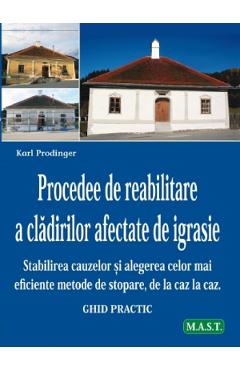- Informatii telefonice:(+40) 748 400 200
Basics of Urbanism | Aglaee Degros, Anna Bagaric, Sabine Bauer
Cod intern: xsales_1392272Producator: Park Books
Vizualizari: 27 / Achizitii: 21
Stoc: In stoc
Pret: 235.0 RON
Acest produs este publicat in categoria Librarie la data de 15-03-2025: 10:03 si vandut de Carturesti. Vanzatorul isi asuma corectitudinea datelor publicate. ( alege finantarea potrivita )
-
Produs cu garantie
-
Livrare direct din stocul fizic al Carturesti
-
Retur gratuit minim 14 zile de la data achizitiei
A manual for a new territorial approach to urban design in the 21st century, based on twelve key conceptsA concise survey and clear presentation of a range planning tools make the book equally suitable for students and practitionersIntroduces concrete examples of visionary spatial developments with a strong focus on practiceText in English and GermanUrban design today is facing a multitude of challenges. Using 12 key terms, this book connects these challenges to projects in this field. It introduces concepts. presents possible solutions, and describes implementation processes. A special focus is put on the interaction of the built environment with living systems ― an approach that is slowly gaining acceptance within the urban design community and that is setting aside a primarily building-oriented practice in favour of an increased appreciation of public space.Basics of Urbanism defines and illustrates parameters with a clearly territorial approach to urban design. Space between buildings is treated as an essential structure for environmental and social change within small-scale neighbourhoods and blocks, as well as at the level districts and even entire cities. This approach includes forward-thinking temporal aspects as well as the implementation of existing resources in the creation of new spatial qualities.



























Scrie parerea ta
Basics of Urbanism | Aglaee Degros, Anna Bagaric, Sabine Bauer
Ai cumparat produsul Basics of Urbanism | Aglaee Degros, Anna Bagaric, Sabine Bauer ?
Lasa o nota si parerea ta completand formularul alaturat.
A manual for a new territorial approach to urban design in the 21st century, based on twelve key conceptsA concise survey and clear presentation of a range planning tools make the book equally suitable for students and practitionersIntroduces concrete examples of visionary spatial developments with a strong focus on practiceText in English and GermanUrban design today is facing a multitude of challenges. Using 12 key terms, this book connects these challenges to projects in this field. It introduces concepts. presents possible solutions, and describes implementation processes. A special focus is put on the interaction of the built environment with living systems ― an approach that is slowly gaining acceptance within the urban design community and that is setting aside a primarily building-oriented practice in favour of an increased appreciation of public space.Basics of Urbanism defines and illustrates parameters with a clearly territorial approach to urban design. Space between buildings is treated as an essential structure for environmental and social change within small-scale neighbourhoods and blocks, as well as at the level districts and even entire cities. This approach includes forward-thinking temporal aspects as well as the implementation of existing resources in the creation of new spatial qualities.
Acorda un calificativ